Kirby Larson's Blog, page 29
September 5, 2013
From the Office of the Future of Reading
Thank you to retired teacher, Bev Baird, for today's post. Once a teacher, always a teacher! Bev feels very strongly about incorporating reading in the daily schedule and she's sharing here how she did it.
 Bev Baird
Bev BairdSchool has begun and children are already getting started in daily reading routines . As an elementary teacher for over 30 years, my major goal for the year is to instill a love of reading in each child.
Yes, we must prepare our students for standardized testing and teach necessary skills, but a child must read and read well, to be successful in school and later in life. Reading daily, in big chunks of reading time, is a necessity.
Reading Donalyn Miller’s book The Book Whisperer so validated what I was doing in the classroom that it was like finding a kindred spirit.
There are four routines I must incorporate into each day, with the purpose of involving children with books and reading:
1. Poetry Pals
Each Monday, I introduce a new poem, which we keep in a duotang -pocketed folder. (These poems come from many sources, based on what skill I want to work with that week.)
I read it first and then there is some discussion. Then we all read it. Each day we will reread it and possibly have a mini lesson on grammar or writing skills based on the poem.
On Friday, groups of 4 or 5 students come up to the front of the group and chant the poem. Most children will participate.
These poems build fluency and can be read and reread with parent volunteers and reading buddies. (A sheet on the back lists who the student has read to.)
2. Shared Reading
Following the poem of the week, is our daily shared reading time of 5 to 10 minutes. This could be poetry, songs, even reader’s theatre (which the children love). I keep theme booklets of poetry which the children work from for 2-3 weeks. These poems and songs could be on fall, Hallowe’en or spring and help build fluency in a fun way.
3. Independent Reading
There is usually a mini lesson, to work on a skill after our shared reading, and then our independent reading time follows this.
By December, our daily reading time is usually about 20-30 minutes a day, after they have built stamina for reading independently (see Daily 5 and Café by Gail Boushey and Joan Moser for great routines and skill development)
I stress with the children that their only work during this time is to “read and record”. Each book is recorded in their reading logs with Date/Title/Author/Genre/JR-E-C/Rating. I meet with each student at least once a week for a conference and running record if necessary. I also mark their logs at the end of the week and discuss their progress.
4. Read Aloud
I read aloud several books a day at the beginning of the year, mostly picture books.
It is imperative that I read daily to children – for good modelling, for language development and for enjoyment.
I soon start chapter books and read every day after second recess. I usually start with Donovan’s Word Jar by Monalisa DeGross , which leads into our own list of wondrous words.
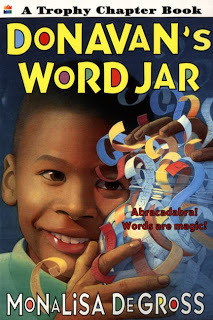
By far the children’s favourite author is Kate DiCamillo. Because of Winn Dixie and The Miraculous Journey of Edward Tulane really connect with the hearts of the students and engage them completely.
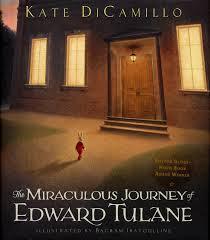
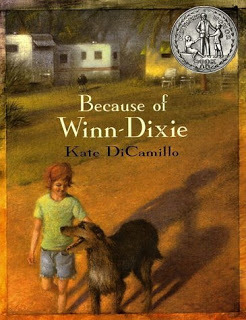
Click here to find a list of some of my favorite read-alouds!
Sometimes, with such wonderful books , it feels like you have the children in the palm of your hands. So many times, I am urged to read just one more chapter (and I usually oblige.)
I keep a running list of the books we read all year and we recommend books to each other on a board as well. We talk about books and yes, we do language activity work with books, but by far, reading and interacting with words and reading, is the most important.
When I complete the DRAs (Developmental Reading Assessment Level) at the end of the year, every child has improved in their reading levels.
For me, though, the sign of fulfilling my goal occurred when the children filled out my end of the year questionnaire and their favourite class routine was. . . (ta dah!) independent reading time.
Bev, you would have been my favorite teacher ever, had I been fortunate enough to be in your class. Thank you for taking time to share your thoughts! I certainly hope you continue to mentor teachers in your retirement -- we all need you!
Published on September 05, 2013 05:00
September 4, 2013
Wednesday Wisdom
Surprise is the greatest gift which life can grant us.
Boris Pasternak
Boris Pasternak
Published on September 04, 2013 06:30
September 3, 2013
From the Office of the Future of Reading*
I thought it apropos to ask Colby Sharp, the ultimate Nerdster, to kick off the new school year here on my blog.
Each Tuesday and Thursday, one of 84 (!!!) volunteer teachers/librarians/reading coaches from all over the world will share their thoughts about connecting kids and books. This is a continuation of a project I launched last year, which proved incredibly rewarding, heartwarming, inspiring and thought-provoking.
Colby was the first teacher I interviewed in 2012. I am grateful that he's humored me by writing this year's inaugural post!
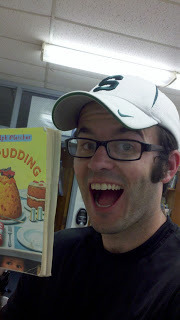 The very un-enthusiastic Mr. Colby Sharp
The very un-enthusiastic Mr. Colby Sharp
For the first time in my teaching career I am switching grades. I’ll be moving from fourth grade to third grade. This move terrifies me. I’m not afraid of change, but it does make me very uncomfortable. I’ve spent the last several weeks trying to read books that I think my third graders will enjoy. Books that will help them develop the passion for reading that so many of my fourth graders have developed the last 6 years.
I’ve spent a lot of time reflecting on the books that I loved as a third grade reader. What I’ve found is that I remember very few books. What I remember are the characters. I remember when Ms. Frey introduced us to Ramona in third grade, and Mrs. Collins showed me Peter and Fudge in fourth grade. They both showed me characters from Roald Dahl’s books: The BFG, Charlie, and James.
I am hoping that I can introduce my students to characters that will stick with them for as long as the characters Ms. Frey and Mrs. Collins introduced me to back in the day. If we can help our young readers fall for a couple of characters, an author, or a series, we give them an opportunity to fall madly in love with books.
As I start to think about what books I will read aloud to my third graders here are a few characters that I cannot wait to introduce them to:
Marty McguireKate Messner has created a dynamite character in Marty that kids are crazy about. If I can get kids to fall in love with Marty, chance are they will find other books by Kate Messner that they will enjoy.
Ralph S. MouseOkay, I have no idea if kids will love this book as much as I did when I was in third grade, but by-golly I am going to give it a go. I’m not sure that I want to live in a world where The Mouse and the Motorcycle isn’t a book kids fall in love with.

ClementineSara Pennypacker and Marla Frazee have created a chapter book character that I feel could be recognized year after year by the big children’s literature awards. Pure brilliance.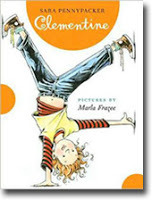
Peter and FudgeA kid that makes it through third grade without bing introduced to Judy Blume’s well crafted characters has been failed by public education. Okay, maybe I’m going a little far there, but kids need to know her characters.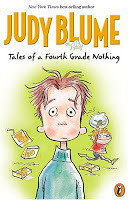
IvanI haven’t decided for sure if I’m going to read my third graders Katherine Applegate’s The One and Only Ivan. It is one of those books that I feel like I need to know my kids first. If I find that they are ready, and that I’m ready, I will share with them the mighty silverback gorilla that has captured so many of our hearts.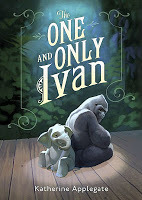
How about you? What characters are you looking forward to sharing with young readers this year? You never know, they may end up being a character that stays with that reader for the rest of their life.
Colby Sharp
*Thank you to Levi for the title for this blog feature!
Each Tuesday and Thursday, one of 84 (!!!) volunteer teachers/librarians/reading coaches from all over the world will share their thoughts about connecting kids and books. This is a continuation of a project I launched last year, which proved incredibly rewarding, heartwarming, inspiring and thought-provoking.
Colby was the first teacher I interviewed in 2012. I am grateful that he's humored me by writing this year's inaugural post!
 The very un-enthusiastic Mr. Colby Sharp
The very un-enthusiastic Mr. Colby Sharp
For the first time in my teaching career I am switching grades. I’ll be moving from fourth grade to third grade. This move terrifies me. I’m not afraid of change, but it does make me very uncomfortable. I’ve spent the last several weeks trying to read books that I think my third graders will enjoy. Books that will help them develop the passion for reading that so many of my fourth graders have developed the last 6 years.
I’ve spent a lot of time reflecting on the books that I loved as a third grade reader. What I’ve found is that I remember very few books. What I remember are the characters. I remember when Ms. Frey introduced us to Ramona in third grade, and Mrs. Collins showed me Peter and Fudge in fourth grade. They both showed me characters from Roald Dahl’s books: The BFG, Charlie, and James.
I am hoping that I can introduce my students to characters that will stick with them for as long as the characters Ms. Frey and Mrs. Collins introduced me to back in the day. If we can help our young readers fall for a couple of characters, an author, or a series, we give them an opportunity to fall madly in love with books.
As I start to think about what books I will read aloud to my third graders here are a few characters that I cannot wait to introduce them to:
Marty McguireKate Messner has created a dynamite character in Marty that kids are crazy about. If I can get kids to fall in love with Marty, chance are they will find other books by Kate Messner that they will enjoy.

Ralph S. MouseOkay, I have no idea if kids will love this book as much as I did when I was in third grade, but by-golly I am going to give it a go. I’m not sure that I want to live in a world where The Mouse and the Motorcycle isn’t a book kids fall in love with.

ClementineSara Pennypacker and Marla Frazee have created a chapter book character that I feel could be recognized year after year by the big children’s literature awards. Pure brilliance.

Peter and FudgeA kid that makes it through third grade without bing introduced to Judy Blume’s well crafted characters has been failed by public education. Okay, maybe I’m going a little far there, but kids need to know her characters.

IvanI haven’t decided for sure if I’m going to read my third graders Katherine Applegate’s The One and Only Ivan. It is one of those books that I feel like I need to know my kids first. If I find that they are ready, and that I’m ready, I will share with them the mighty silverback gorilla that has captured so many of our hearts.

How about you? What characters are you looking forward to sharing with young readers this year? You never know, they may end up being a character that stays with that reader for the rest of their life.
Colby Sharp
*Thank you to Levi for the title for this blog feature!
Published on September 03, 2013 05:00
August 31, 2013
Meet Duke
I'm pleased to announce the publication of my 11th book, DUKE, which tells the story of Hobie Hanson who loans his German Shepherd, Duke, to the Dogs for Defense program during WWII. Hobie thinks Duke will be helping to guard the Boeing airplane plant, but he's done such a crackerjack job of training him, that Duke's enlisted in the K-9 corps!
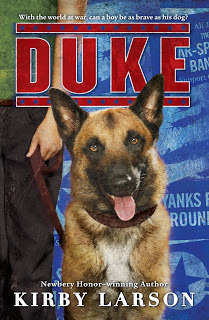
During the war, everyone at home pitched in -- buying war stamps and bonds, saving scrap metal and paper, growing Victory Gardens. And thousands of American families truly did loan their family pets to Uncle Sam.
You can listen to me talk about writing the book here.
If you live in the Puget Sound area, I'd love for you to come to the book launch at 3rd Place Books (Lake Forest Park) on Sunday, September 15, at 5:30 pm.

A portion of the event's book sales will go to support Reading with Rover, one of my favorite local organizations.

During the war, everyone at home pitched in -- buying war stamps and bonds, saving scrap metal and paper, growing Victory Gardens. And thousands of American families truly did loan their family pets to Uncle Sam.
Duke has received a starred review, from Kirkus:
". . .Authentic details, such as radio drama, ration stamps and the ever-present worry of a telegram bearing terrible news, enrich this story of a boy and his dog. References to the Japanese internment and anti-German prejudice bring the war even closer to home. However, Hobie is no perfect hero. He wrestles with his decisions, making mistakes along the way; a refusal to glamorize war sets this story apart. The universal anguish Hobie feels in his sacrifice will touch readers struggling to make sense of their own losses. Exceptionally well-crafted and emotionally authentic."
You can listen to me talk about writing the book here.
If you live in the Puget Sound area, I'd love for you to come to the book launch at 3rd Place Books (Lake Forest Park) on Sunday, September 15, at 5:30 pm.

A portion of the event's book sales will go to support Reading with Rover, one of my favorite local organizations.
Published on August 31, 2013 06:30
August 30, 2013
Friend Friday
I am so thrilled to host Anne Ursu today. Her book, Breadcrumbs, is lovely and haunting and I can't wait to read The Real Boy, due to publish on September 24. Here's Anne. . .
 Anne Ursu
Anne Ursu
When I started my last book, I was married and living in Ohio. When I handed the final draft in, I was divorced and living in Minneapolis with my three-year-old boy. I knew figuring out how to be a single mom would be tough, and I knew it would be hard to fit my work around the exigencies of daily life. But, I told myself, I am a writer--I would figure it out so I could write.
But it’s hard for those creative wheels to turn when your brain is so full already. I didn’t even have the attention span to read, much less figure out how to spin words into a sentence. And life has this funny way of constantly changing under your feet. My son was expelled from one preschool, and a few months later was diagnosed with Asperger’s Syndrome. There was no room for anything else.
“Why don’t you just try?” people would ask, trying to help. And I’d have to answer, “Because I don’t have any ideas.”
I am supposed to be a writer. But what kind of a writer has no stories to tell?
Then, one night a friend took me to a marionette production of “The Sorcerer’s Apprentice.” The show was so creepy and atmospheric, full of shadows, unchecked ambition, and ungovernable magic--and suddenly at one point in the first act the switch flicked:
There is a forest where the trees were made from the spirits of old wizards. There is a magician. There is a boy who does not quite fit in. There is a society in decay. The world is dark and the rules are nebulous and keep changing, and the things that seem the most real of all are really artificial.
An idea.
It comes in a rush. I can feel it, like a magician is pulling an endless chain of handkerchiefs out of my chest. Everything fills up again, everything flows.
In Rebecca Stead’s When You Reach Me, the characters tell us we are all living behind a veil that keeps us from seeing the truth of things, the world in all its beauty and terror. This is what writing is like--the world looks fuzzy and obscure and then in one moment, for no reason, a corner of the veil lifts and suddenly you see the stories that have been lying there the whole time.
It’s a peculiar and fickle magic--and I know from reading fantasy that it’s reckless to rely on magic. But I don’t know another way. I do know that every book I’ve ever written has been inspired by some experience of art--a play, a TV episode, a fairy tale. As much as life forces us to focus on putting one foot in front of the other, stories help us lift the veil. There’s so much light and possibility out there--stories teach us that. They may not tell us precisely where to look, but they help us realize we can look. Sometimes, that’s what we need most.
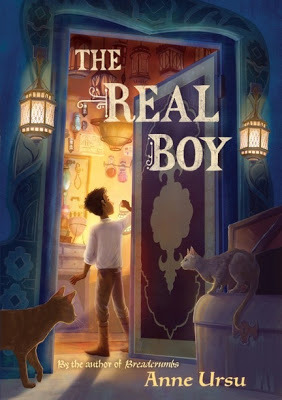
 Anne Ursu
Anne Ursu
When I started my last book, I was married and living in Ohio. When I handed the final draft in, I was divorced and living in Minneapolis with my three-year-old boy. I knew figuring out how to be a single mom would be tough, and I knew it would be hard to fit my work around the exigencies of daily life. But, I told myself, I am a writer--I would figure it out so I could write.
But it’s hard for those creative wheels to turn when your brain is so full already. I didn’t even have the attention span to read, much less figure out how to spin words into a sentence. And life has this funny way of constantly changing under your feet. My son was expelled from one preschool, and a few months later was diagnosed with Asperger’s Syndrome. There was no room for anything else.
“Why don’t you just try?” people would ask, trying to help. And I’d have to answer, “Because I don’t have any ideas.”
I am supposed to be a writer. But what kind of a writer has no stories to tell?
Then, one night a friend took me to a marionette production of “The Sorcerer’s Apprentice.” The show was so creepy and atmospheric, full of shadows, unchecked ambition, and ungovernable magic--and suddenly at one point in the first act the switch flicked:
There is a forest where the trees were made from the spirits of old wizards. There is a magician. There is a boy who does not quite fit in. There is a society in decay. The world is dark and the rules are nebulous and keep changing, and the things that seem the most real of all are really artificial.
An idea.
It comes in a rush. I can feel it, like a magician is pulling an endless chain of handkerchiefs out of my chest. Everything fills up again, everything flows.
In Rebecca Stead’s When You Reach Me, the characters tell us we are all living behind a veil that keeps us from seeing the truth of things, the world in all its beauty and terror. This is what writing is like--the world looks fuzzy and obscure and then in one moment, for no reason, a corner of the veil lifts and suddenly you see the stories that have been lying there the whole time.
It’s a peculiar and fickle magic--and I know from reading fantasy that it’s reckless to rely on magic. But I don’t know another way. I do know that every book I’ve ever written has been inspired by some experience of art--a play, a TV episode, a fairy tale. As much as life forces us to focus on putting one foot in front of the other, stories help us lift the veil. There’s so much light and possibility out there--stories teach us that. They may not tell us precisely where to look, but they help us realize we can look. Sometimes, that’s what we need most.

Published on August 30, 2013 05:30
August 29, 2013
Thursday's Thought
"If I've made it. . .it's because there were an awful lot of people who cared enough to help me."
Althea Gibson
Althea Gibson
Published on August 29, 2013 06:30
August 23, 2013
Friend Friday
Please meet Leah Pileggi, who clearly shares my passion for historical fiction. I was completely taken with Prisoner 88 when I picked up the ARC (advanced reading copy) at ALA midwinter and planned to write a review when it hit me to simply see if Leah might like to talk about her own book. I emailed her and she said yes! To my knowledge, Leah is my first guest author or illustrator who's written a song. Check it out here. Take it away, Leah!
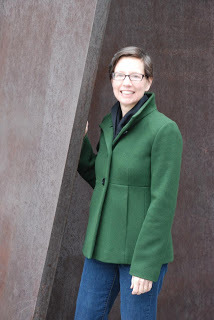 Leah Pileggi
Leah Pileggi
How do you come up with ideas? What’s your inspiration? Every writer has been asked some version of those questions. For me, ideas are easy because I’m interested in pretty much everything. But when I stumbled onto the inspiration for my middle-grade novel, Prisoner 88, that story grabbed me by my gut and never let go.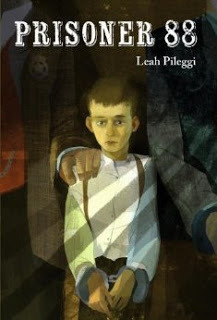
On a weekday afternoon in June of 2007, I had three hours to explore Boise, Idaho. My husband was at a meeting at a technology company, the reason for our quick trip from Pennsylvania, and I didn’t have any idea what to see in those three hours. A local paper in the lobby of our hotel said something about touring the Old Idaho Penitentiary. I love old architecture, so off I went. I parked in a dirt lot. With the sun beating down on my head, I ran toward the white sandstone building that was the entrance to the Old Pen, closed as a prison since 1972. As I rushed in the door, the woman selling tickets said, “The tour just left. You can catch up.” Out another door and into the blinding sun, I found a group of fifteen somewhat wilted folks listening to the docent. I looked around at the cluster of buildings of what had been the Idaho Territorial Penitentiary, built in stages beginning in 1872. Some buildings remained intact, frozen in time. A few were only shells, at least one with signs of a long-ago fire. I searched for a sliver of shade. I thought, imagine having to live in a place like this.The group straggled along. We heard about hand-made weapons and looked out at the hill where local folks gathered to watch hangings. A few people left in search of air conditioning. The inmates did the laundry. They farmed, raised animals, even used dynamite to blast the rock for the walls of the penitentiary.A couple more people could no longer take the heat. By the end of the tour, the remaining three or four of us heard that the youngest prisoner ever held there was ten years old. He was James Oscar Baker, prisoner #88, and he served time in the 1880s for shooting a man who had threatened his father. For a children’s writer, I had hit the mother lode. What kid wouldn’t want to know how a ten-year-old boy survived in a penitentiary? Before there was electricity. With the help of the Idaho Historical Society, I found what remained of the records for prisoner 88. Court documents, legal letters, his intake record. What I didn’t find was an account of his life inside the Old Pen. That’s when Jake’s story was born.
Ideas and inspiration are all around. Keep your eyes and ears and heart open, and stories will find you.
We are so glad you hung in there through the blistering heat that day, Leah. I'm thinking some of that heat made its way into the story through your powerful, terse writing. Thanks for writing such a thought-provoking book about this little known slice of history.
 Leah Pileggi
Leah PileggiHow do you come up with ideas? What’s your inspiration? Every writer has been asked some version of those questions. For me, ideas are easy because I’m interested in pretty much everything. But when I stumbled onto the inspiration for my middle-grade novel, Prisoner 88, that story grabbed me by my gut and never let go.

On a weekday afternoon in June of 2007, I had three hours to explore Boise, Idaho. My husband was at a meeting at a technology company, the reason for our quick trip from Pennsylvania, and I didn’t have any idea what to see in those three hours. A local paper in the lobby of our hotel said something about touring the Old Idaho Penitentiary. I love old architecture, so off I went. I parked in a dirt lot. With the sun beating down on my head, I ran toward the white sandstone building that was the entrance to the Old Pen, closed as a prison since 1972. As I rushed in the door, the woman selling tickets said, “The tour just left. You can catch up.” Out another door and into the blinding sun, I found a group of fifteen somewhat wilted folks listening to the docent. I looked around at the cluster of buildings of what had been the Idaho Territorial Penitentiary, built in stages beginning in 1872. Some buildings remained intact, frozen in time. A few were only shells, at least one with signs of a long-ago fire. I searched for a sliver of shade. I thought, imagine having to live in a place like this.The group straggled along. We heard about hand-made weapons and looked out at the hill where local folks gathered to watch hangings. A few people left in search of air conditioning. The inmates did the laundry. They farmed, raised animals, even used dynamite to blast the rock for the walls of the penitentiary.A couple more people could no longer take the heat. By the end of the tour, the remaining three or four of us heard that the youngest prisoner ever held there was ten years old. He was James Oscar Baker, prisoner #88, and he served time in the 1880s for shooting a man who had threatened his father. For a children’s writer, I had hit the mother lode. What kid wouldn’t want to know how a ten-year-old boy survived in a penitentiary? Before there was electricity. With the help of the Idaho Historical Society, I found what remained of the records for prisoner 88. Court documents, legal letters, his intake record. What I didn’t find was an account of his life inside the Old Pen. That’s when Jake’s story was born.
Ideas and inspiration are all around. Keep your eyes and ears and heart open, and stories will find you.
We are so glad you hung in there through the blistering heat that day, Leah. I'm thinking some of that heat made its way into the story through your powerful, terse writing. Thanks for writing such a thought-provoking book about this little known slice of history.
Published on August 23, 2013 06:30
August 22, 2013
Thursday's Thought
You can choose what you do. You can't choose what you like to do.
Gretchen Rubin
Gretchen Rubin
Published on August 22, 2013 06:30
August 16, 2013
Friend Friday
Kathi Appelt! Those very two words set my heart aflutter. I have just finished her warm and delicious new book, The True Blue Scouts of Sugarman Swamp and know you will love it as much as I do. Now, I'll hush up and let Kathi talk:
 Kathi Appelt, looking as sweet as sugar cane pie
Kathi Appelt, looking as sweet as sugar cane pie
The Map of my Heart
I first read about heart-mapping in Georgia Heard’s wonderful book, Awakening the Heart: Exploring Poetry in Elementary and Middle School. The basic idea is to draw a large heart and to fill it in with all of the things that matter to you, placing the most important squarely in the middle. I love this. It’s a great way to think about what is important in our lives, and even though Ms. Heard designed the exercise for school kids, I’ve found it enormously useful for my adult students. I’m a firm believer in writing about those things we love, and where better to find them than on a map of our hearts? But a couple of years ago, with a deadline looming, and the story in front of me becoming darker and darker, I realized that the map I had drawn of my heart, while it named the things that I loved, wasn’t sufficient at that moment. Only recently, in the midst of the worst drought in Texas history, we had lost my husband’s family home to a raging fire that consumed the house in minutes. Fortunately, no one was hurt, but it was a terrible loss for our family. No wonder the story at hand kept sliding into melancholy. And then, one morning, I woke up to an email from my friend Cynthia Leitich Smith: “Write something funny.” Hah! “No really,” she wrote back. “You’re funny.” Then she reminded me of my earlier picture books, Bubba and Beau, and told me that I could be funny again. At first, I didn’t get it, and furthermore, I knew that the line between funny and stupid was very thin. I’m always glad to be funny, but who wants to be stupid? Still, I respect and admire Cynthia. And I also trust her, so dismissing her wasn’t an option. I looked at my map. I saw the cats and my husband and my close friends. I saw my kids and music and good white wine. They were all right there. Like the song, “these are a few of my favorite things.” So why was I in such a funk? I stared at the map. And that’s when I realized that there was a hole, an empty space, right in the middle. I had to squint, but there it was, so small that I hadn’t even noticed. My heart map was filled with everything I loved except laughter. It took a good friend to see it. So I set aside that dark book, and began to work on filling the hole. In doing so, I remembered raccoons and the Ivory Billed Woodpecker and fat, juicy dewberries, things I loved but that were absent on my heart map. The writing itself brought all of them back to me. What I’m trying to say is that as important as it is to write about the things that we can readily see on the maps of our hearts; it’s equally as important to recognize the holes and to write toward those too. In fact, maybe it’s more important. So, when you’re setting out to work on a story, go ahead and draw that heart map. Put all of the things that are important to you on it, but then step back and ask, “what is missing?” It’s in the missing that we find the stories we absolutely need to write. I needed to write something funny in order to restore my very own soul. And considering the loss of our family hacienda, it’s not too surprising that The True Blue Scouts of Sugar Man Swamphas, at its core, the saving of a home, even if it’s a swampy one.
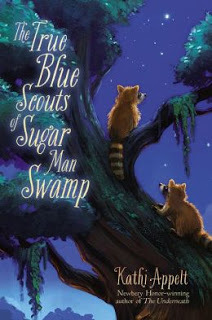
Now, as I embark upon my next project, I’m beginning with a new map. I already know one important missing: a close relative. She’s left an enormous hole. But I have to draw the map anyways, just to see how large the hole is and how deep I have to go in order to fill it back up. It’s the best I have for now, but I trust that as I write, I’ll remember what I loved about her and why I miss her so much. And at the end of the day, I know that it’ll be the writing itself that will bring her back to me. And that hole? That’s the open door for getting there. P.S. This website gives you all you need for drawing your own heart map. Better yet, buy Georgia Heard’s wonderful book. She’s an amazing poet and teacher. You won’t regret it.
I'm going to order that book right now, Kathi! Thank you for such a "heart-warming" post. . .and such a heart warming book. And thanks to Cynthia for giving you that encouragement to write funny!
 Kathi Appelt, looking as sweet as sugar cane pie
Kathi Appelt, looking as sweet as sugar cane pie
The Map of my Heart
I first read about heart-mapping in Georgia Heard’s wonderful book, Awakening the Heart: Exploring Poetry in Elementary and Middle School. The basic idea is to draw a large heart and to fill it in with all of the things that matter to you, placing the most important squarely in the middle. I love this. It’s a great way to think about what is important in our lives, and even though Ms. Heard designed the exercise for school kids, I’ve found it enormously useful for my adult students. I’m a firm believer in writing about those things we love, and where better to find them than on a map of our hearts? But a couple of years ago, with a deadline looming, and the story in front of me becoming darker and darker, I realized that the map I had drawn of my heart, while it named the things that I loved, wasn’t sufficient at that moment. Only recently, in the midst of the worst drought in Texas history, we had lost my husband’s family home to a raging fire that consumed the house in minutes. Fortunately, no one was hurt, but it was a terrible loss for our family. No wonder the story at hand kept sliding into melancholy. And then, one morning, I woke up to an email from my friend Cynthia Leitich Smith: “Write something funny.” Hah! “No really,” she wrote back. “You’re funny.” Then she reminded me of my earlier picture books, Bubba and Beau, and told me that I could be funny again. At first, I didn’t get it, and furthermore, I knew that the line between funny and stupid was very thin. I’m always glad to be funny, but who wants to be stupid? Still, I respect and admire Cynthia. And I also trust her, so dismissing her wasn’t an option. I looked at my map. I saw the cats and my husband and my close friends. I saw my kids and music and good white wine. They were all right there. Like the song, “these are a few of my favorite things.” So why was I in such a funk? I stared at the map. And that’s when I realized that there was a hole, an empty space, right in the middle. I had to squint, but there it was, so small that I hadn’t even noticed. My heart map was filled with everything I loved except laughter. It took a good friend to see it. So I set aside that dark book, and began to work on filling the hole. In doing so, I remembered raccoons and the Ivory Billed Woodpecker and fat, juicy dewberries, things I loved but that were absent on my heart map. The writing itself brought all of them back to me. What I’m trying to say is that as important as it is to write about the things that we can readily see on the maps of our hearts; it’s equally as important to recognize the holes and to write toward those too. In fact, maybe it’s more important. So, when you’re setting out to work on a story, go ahead and draw that heart map. Put all of the things that are important to you on it, but then step back and ask, “what is missing?” It’s in the missing that we find the stories we absolutely need to write. I needed to write something funny in order to restore my very own soul. And considering the loss of our family hacienda, it’s not too surprising that The True Blue Scouts of Sugar Man Swamphas, at its core, the saving of a home, even if it’s a swampy one.

Now, as I embark upon my next project, I’m beginning with a new map. I already know one important missing: a close relative. She’s left an enormous hole. But I have to draw the map anyways, just to see how large the hole is and how deep I have to go in order to fill it back up. It’s the best I have for now, but I trust that as I write, I’ll remember what I loved about her and why I miss her so much. And at the end of the day, I know that it’ll be the writing itself that will bring her back to me. And that hole? That’s the open door for getting there. P.S. This website gives you all you need for drawing your own heart map. Better yet, buy Georgia Heard’s wonderful book. She’s an amazing poet and teacher. You won’t regret it.
I'm going to order that book right now, Kathi! Thank you for such a "heart-warming" post. . .and such a heart warming book. And thanks to Cynthia for giving you that encouragement to write funny!
Published on August 16, 2013 06:30
August 15, 2013
Thursday's Thought
The main thing is to remain oneself under any circumstances.
Advice given to Madeline Albright by her father
Advice given to Madeline Albright by her father
Published on August 15, 2013 06:30



